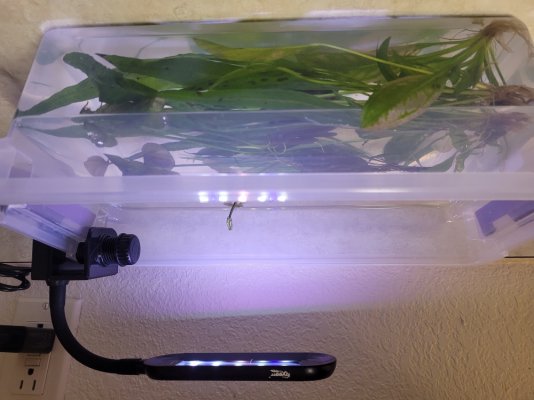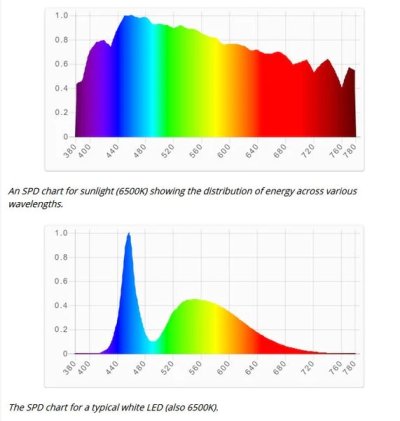DesktopTankDiva
Aquarium Advice Regular
- Joined
- Oct 24, 2018
- Messages
- 51
Hi everyone,
I was active on this forum about 5 years ago when I tried starting up my small desktop aquarium. It ended up failing before it even cycled completely because I had a snail hitchhike on one of my plants. I scrapped the entire thing and now I'm ready to give it another try.
I have a 3.5 gallon acrylic desktop tank which I'm currently deciding on decor for. I have 2 Java ferns, 2 banana plants, and an unknown smaller plant which are currently in quarantine after a bleach dip. I'm glad I dipped because at the very least there was a tiny, lightning fast swimming thing that I'm certain I didn't want in my future tank.
My plants are in a plastic shoebox sized storage tote, I change the water twice weekly and dechlorinate it. I also add FlorinMulti with the water change, and API CO2 booster liquid once daily. I have a blue LED submersible light that sits at the bottom of the container, I leave it on for about 12 hours. However, my banana plants are not looking the best, the small unknown plant's leaves are turning transparent, but the Java is hanging in there. Any advice on how to better care for my plants in a quarantine container?
Thanks! It's great to be back!
DesktopDiva
I was active on this forum about 5 years ago when I tried starting up my small desktop aquarium. It ended up failing before it even cycled completely because I had a snail hitchhike on one of my plants. I scrapped the entire thing and now I'm ready to give it another try.
I have a 3.5 gallon acrylic desktop tank which I'm currently deciding on decor for. I have 2 Java ferns, 2 banana plants, and an unknown smaller plant which are currently in quarantine after a bleach dip. I'm glad I dipped because at the very least there was a tiny, lightning fast swimming thing that I'm certain I didn't want in my future tank.
My plants are in a plastic shoebox sized storage tote, I change the water twice weekly and dechlorinate it. I also add FlorinMulti with the water change, and API CO2 booster liquid once daily. I have a blue LED submersible light that sits at the bottom of the container, I leave it on for about 12 hours. However, my banana plants are not looking the best, the small unknown plant's leaves are turning transparent, but the Java is hanging in there. Any advice on how to better care for my plants in a quarantine container?
Thanks! It's great to be back!
DesktopDiva



